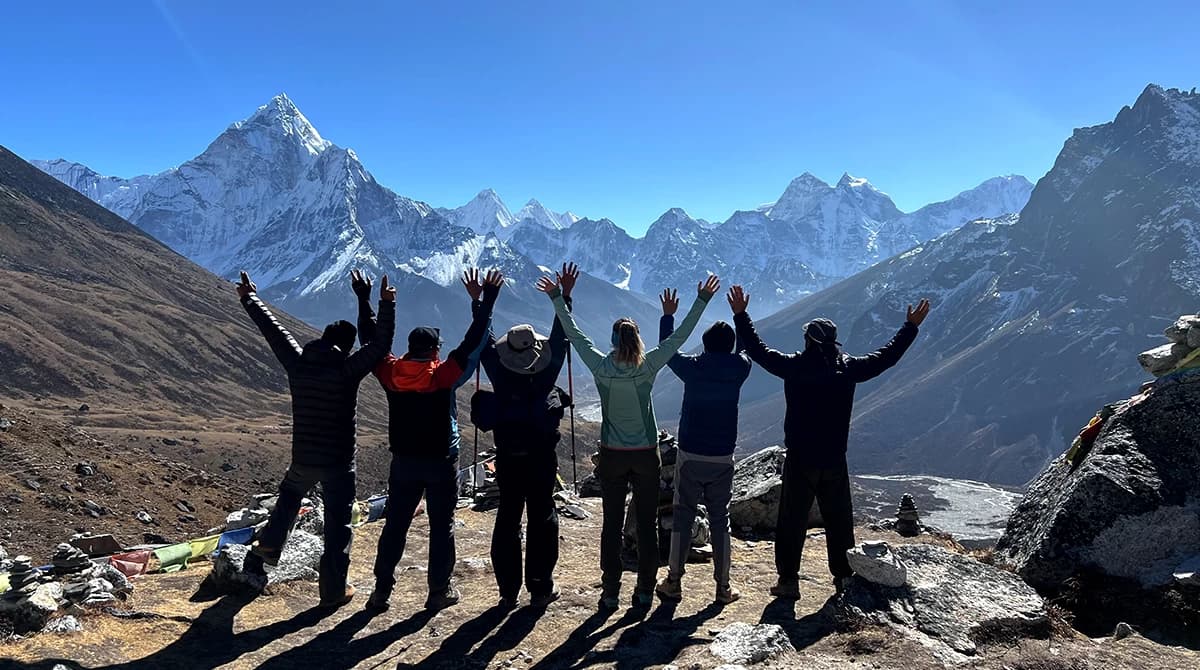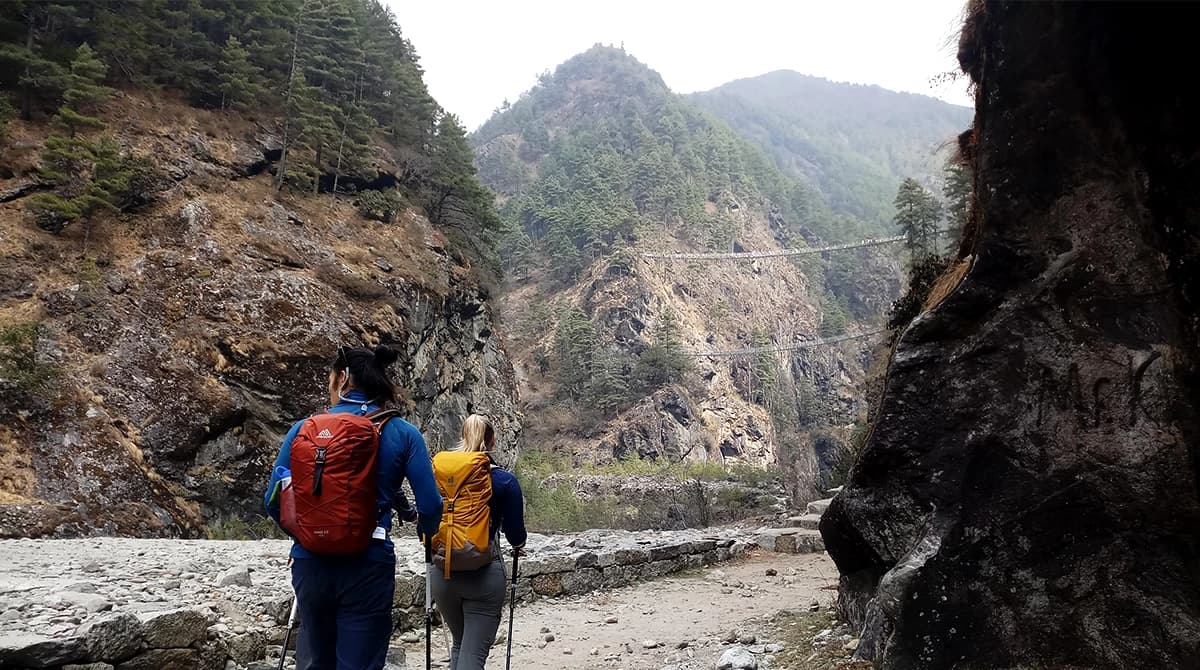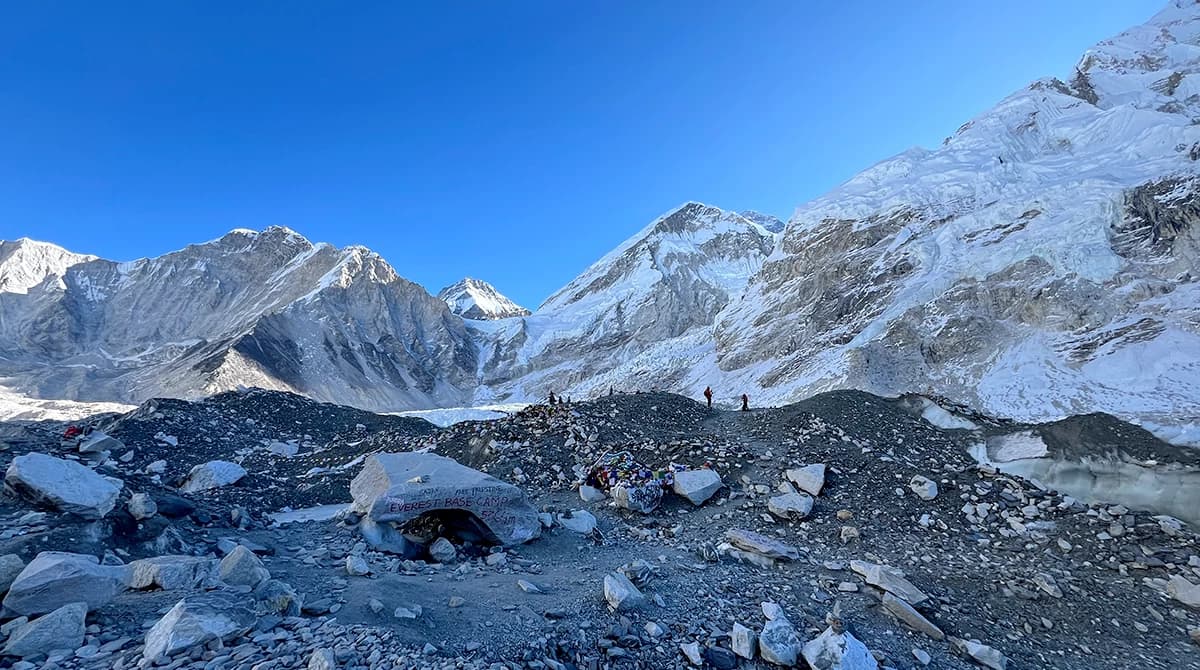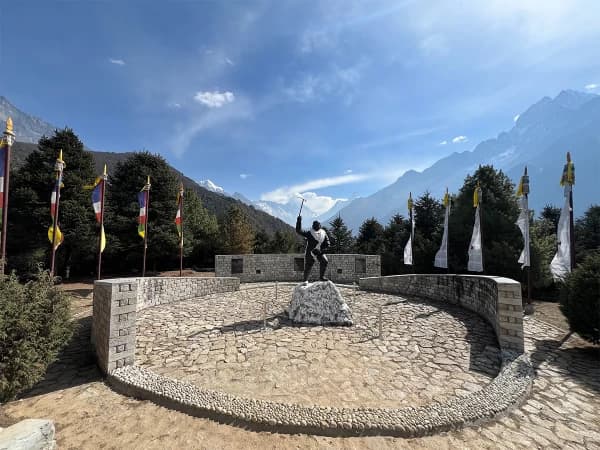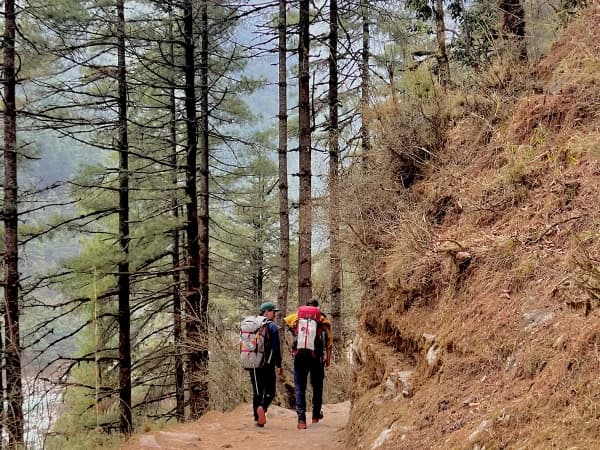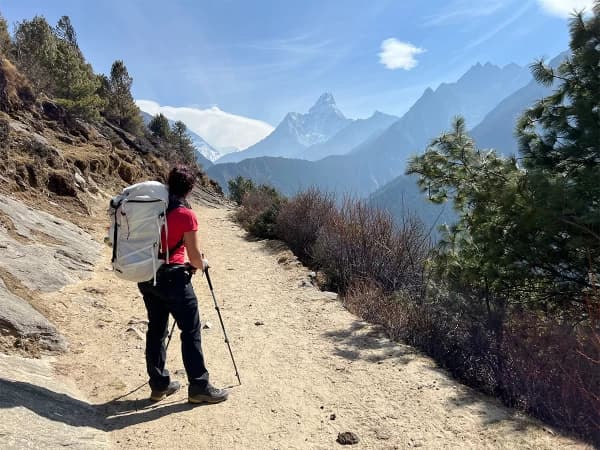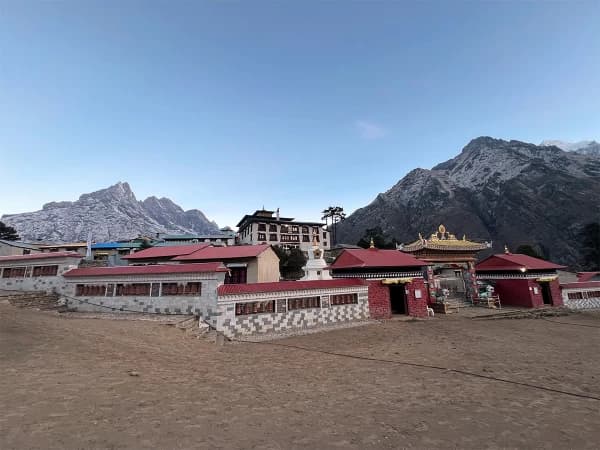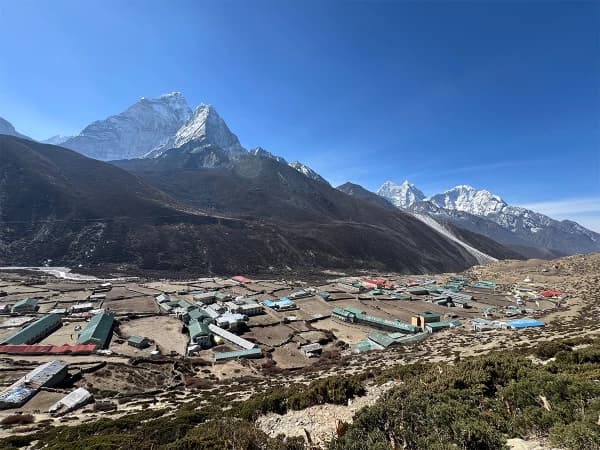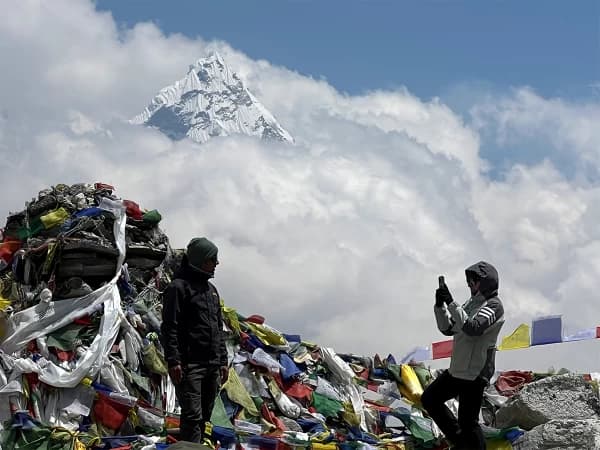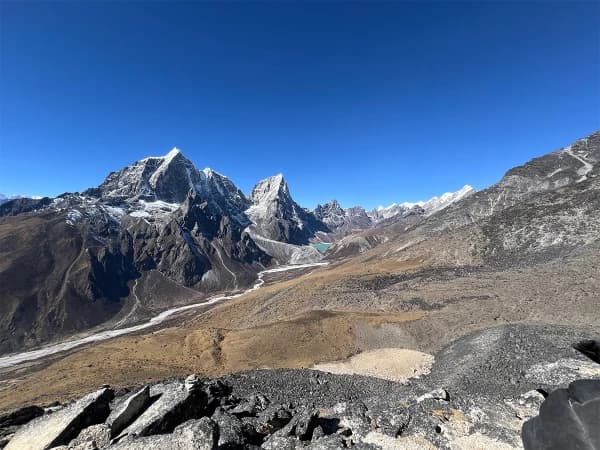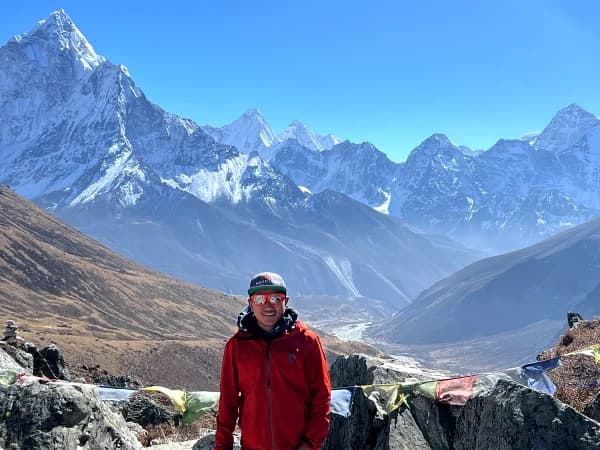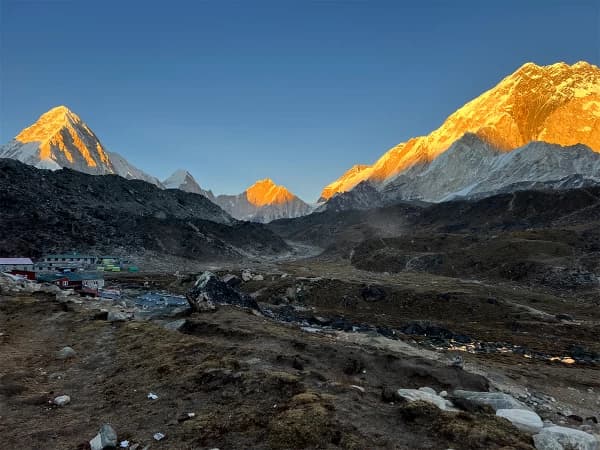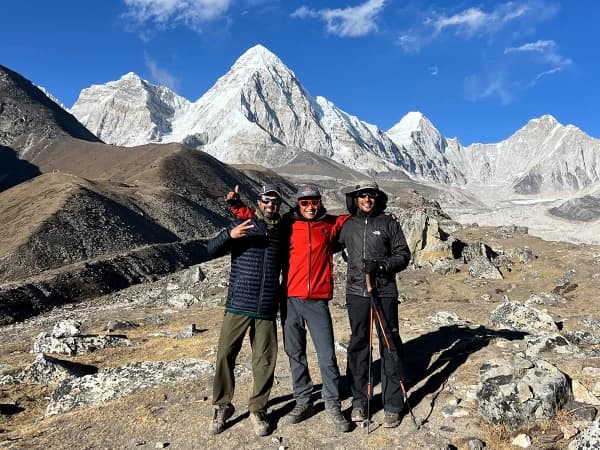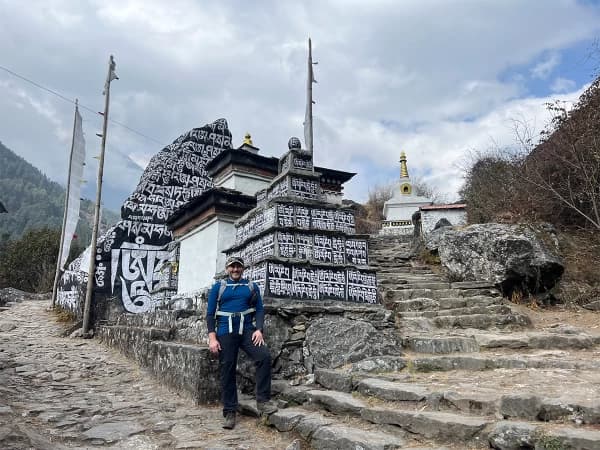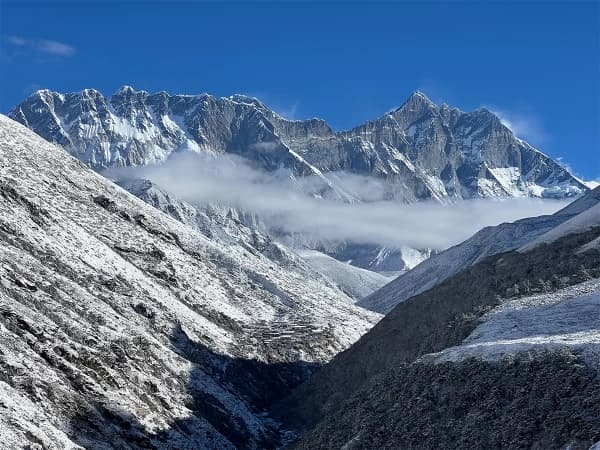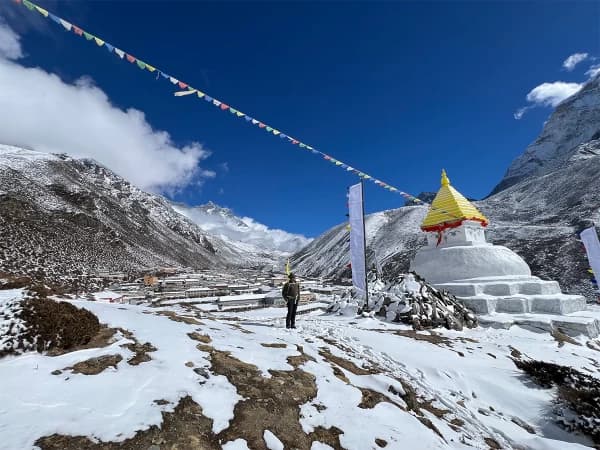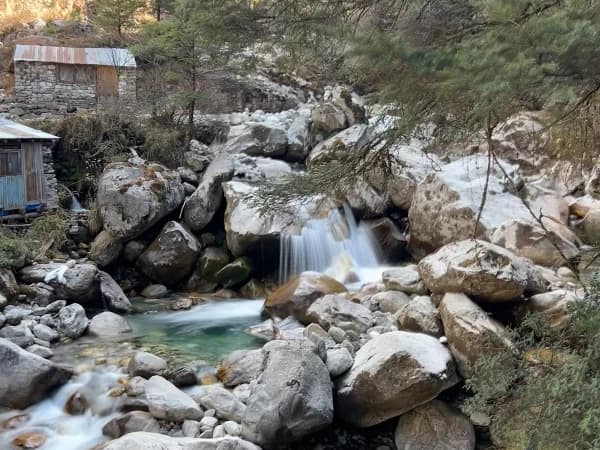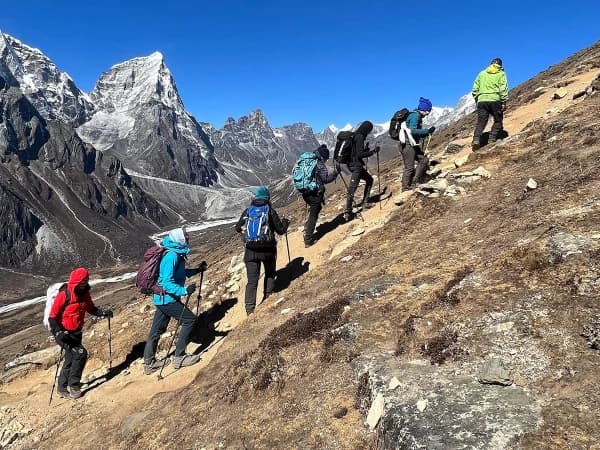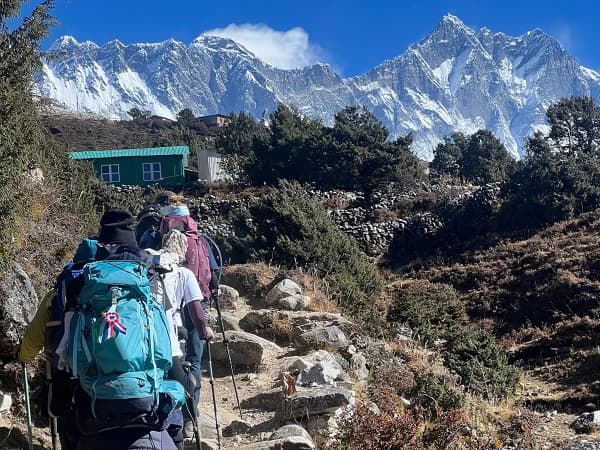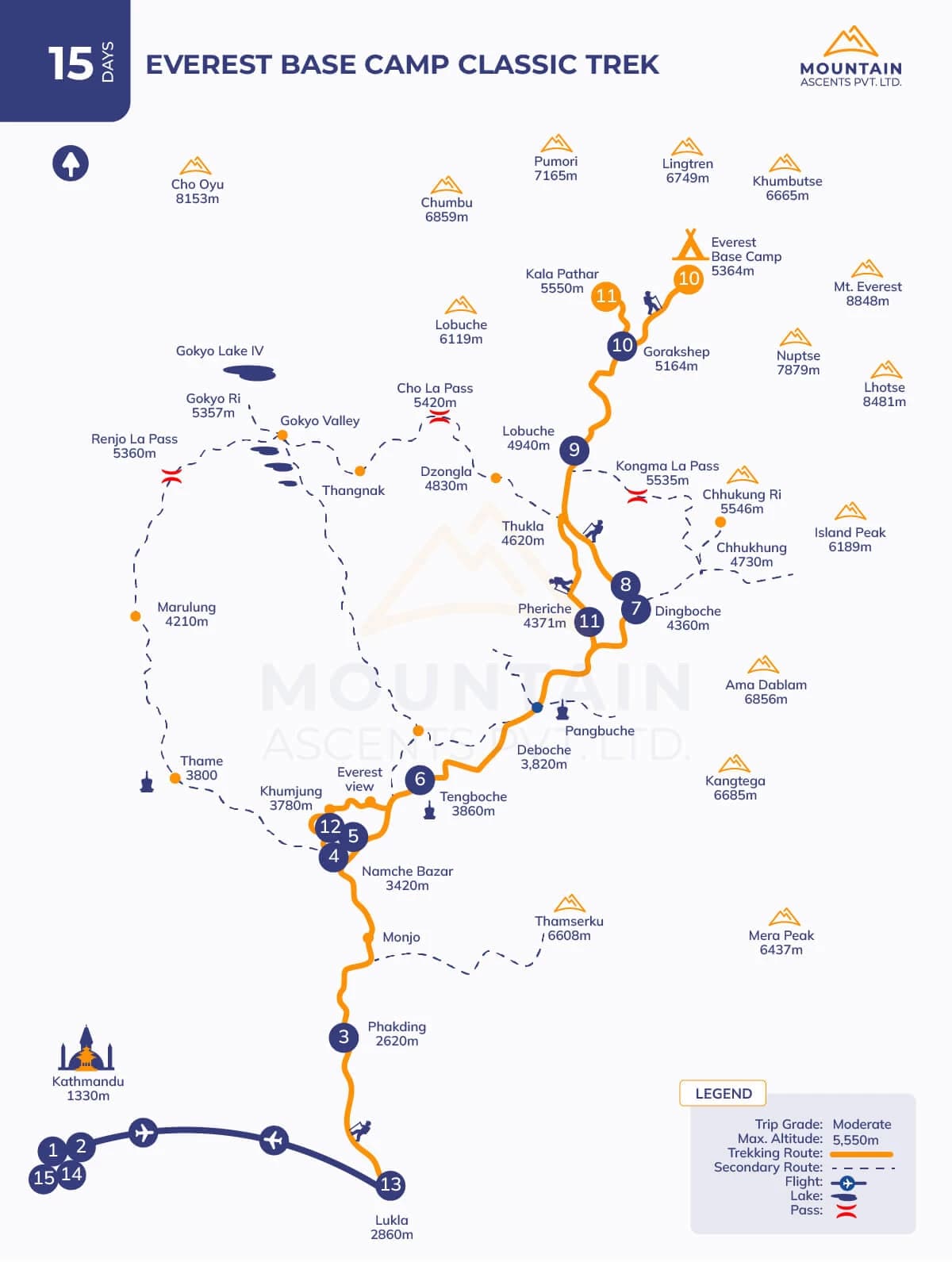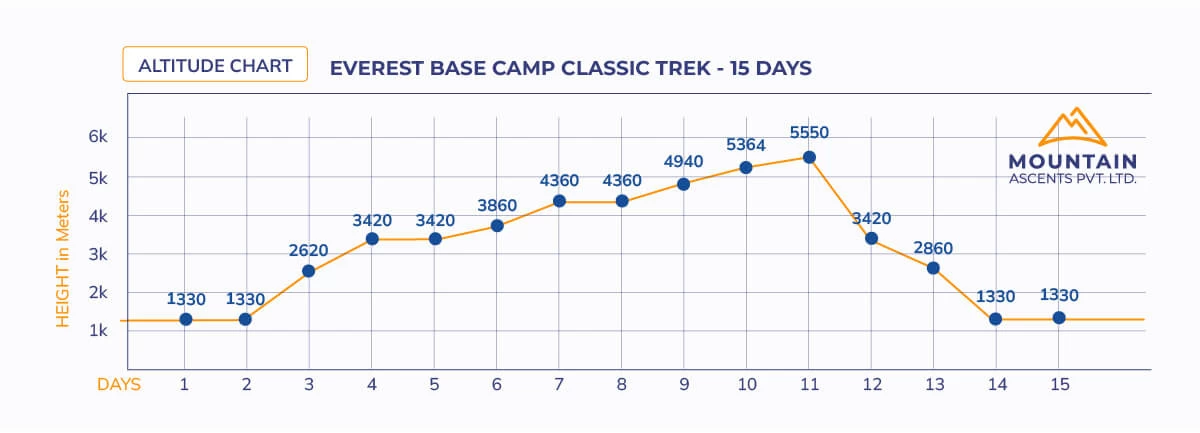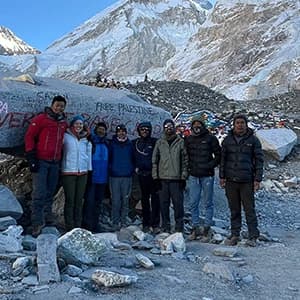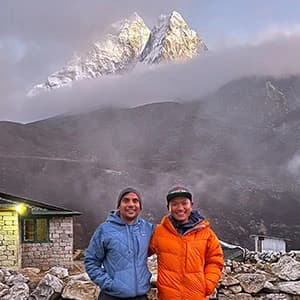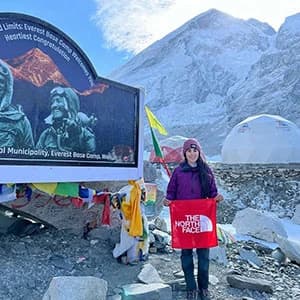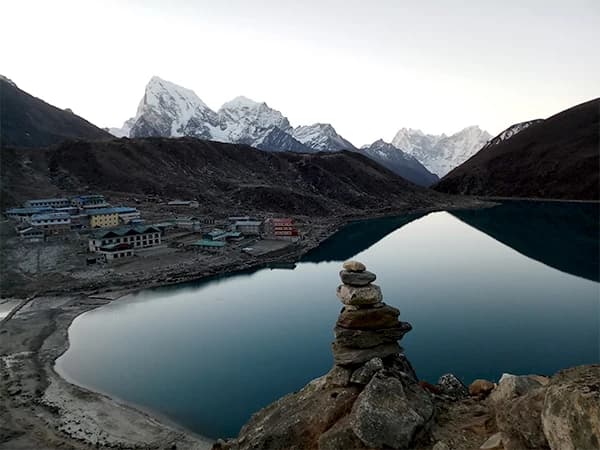The Everest Base Camp Classic Trek is a world-famous adventure that starts and finishes in the lively city of Kathmandu in Nepal and takes you on an incredible journey to the base of the world's highest mountain at an altitude of 5,364 m/17,598 ft above sea level. For someone seeking a retreat in Buddhism and their way of life amid the majestic snow-capped mountain peaks, it is a golden opportunity to not miss at all. Balanced by a daring adventure that comes in the high altitude expedition where trekkers might have to push themselves beyond their physical and mental limits, initiating a life-changing transformative experience, the Everest Base Camp Classic Trekking is an unforgettable adventure of a lifetime.
Generally, this classic Himalayan voyage begins with a thrilling mountain flight from Ramechhap to Lukla, the starting point of your Everest Base Camp Trek, and moves along the Dudh Koshi River. Once you touch down in Lukla, the real adventure starts as you step onto the famous trail that was once followed by the legends Edmund Hillary and Tenzing Norgay Sherpa. Your trip will take you past some of the most spectacular mountains in the world, including Everest, Lhotse, Nuptse, and Ama Dablam, to name a few, as you make your way through the lush green valleys, traditional mountain villages, cascading waterfalls, and suspension bridges of the Sagarmatha National Park, home to a diverse range of flora and fauna. As you make your way up, you'll catch sight of the breathtaking Himalayas, which will awe you with their majesty.
After stopping at Namche and Dingboche to adjust, you'll continue on your journey again through the serene mountain valleys, dense forests, and challenging terrain at some sections leading to the Everest Base Camp, denoting the completion of the major trekking part. Reaching here provides you with a wonderful achievement that represents the highest point of your trekking adventure. Traveling back the same route to Lukla after saying goodbye to the magnificent mountains will leave you with lifelong memories, respect for the resilience of the Himalayas, and a sense of gratitude for the kindness of the Nepalese people. Throughout the journey, it will be epic to receive a deeper insight into the daily life of Sherpas and enjoy their warm and genuine hospitality over a dozen snowy mountains in the legendary Khumbu Valley of Nepal.
Join Mountain Ascents’s trek to the Everest Base Camp, making your dream a reality and a lifetime experience. We provide a variety of packages to suit different needs, from standard to premium, allowing for a tailored and pleasant journey. Every trekker may count on the unwavering assistance of the team, which will be led by climbing guides with years of extensive experience and extensive qualifications. The company ensures a smooth planning process through the provision of comprehensive documentation, enabling participants to focus exclusively on the planned adventure. Mountain Ascents goes above and beyond to make attaining aspirations a reality, putting in all effort to make each trip memorable and successful.
Our Strengths
- Certified and experienced guides
- High Success Rate
- Immersive/Authentic Experience
- Trek/Climbing Confidence and Highly Motivated Crew
Trip Highlights
- Visit various historical, cultural, and religious sites of the Kathmandu Valley, including Pashupatinath Temple, Swayambhunath, Boudhanath, and three ancient Durbar Squares.
- Enjoy a thrilling mountain flight to Lukla and vice versa with stunning aerial views of the traditional villages, lush hills, cascading waterfalls, and shimmering rivers.
- Traverse the classic trekking route to Everest Base Camp, following in the footsteps of the legendary Sir Edmund Hillary and Tenzing Norgay Sherpa.
- Experience the unique culture, traditions, and way of life of people from the Himalayas, which showcase a root in Tibetan Buddhism, especially that of Sherpas and their warm hospitality.
- Walk amidst the mountain giants, some of the notable tops of the world, such as Mt. Everest, Lhotse, and Makalu, including Ama Dablam, Nuptse, Pumori, Thamserku, Lingten, Lhola, Tauche, Cholatse, and others.
- Discover the iconic Khumbu Icefall, the wide array of flora and fauna, and the distinctive culture of various ethnic communities of the Sagarmatha National Park.
- Ascend to the base of the tallest mountain in the world and embrace the closest view of Mount Everest from Kala Patthar as much as possible; it is extremely remarkable during sunrise and sunset.
- Marvel at the ancient art and architecture at several religious monuments of the Khumbu region of Nepal with profound spirituality such as Tengboche Monastery, the largest in the region to seek blessings and many more.
What can you expect during the Classic Everest Base Camp (EBC) Trek?
The Everest Base Camp Classic Trek is undoubtedly one of the most famous trekking routes in the world that, in recent years, has been conquerable even by beginners with appropriate packing of trekking gear and equipment and physical and mental preparedness upon guided by government-licensed trekking, tours, and expedition operators like Mountain Ascents.
The trekking route is well established and dotted with numerous tea houses, local lodges, and guest houses, ensuring trekkers are comfortable along the route up to the Gorak Shep near Everest Base Camp. Every day you will walk 5-7 hours, which should not be a problem for physically fit individuals. Some sections also feature steep ascends and descends, including rugged terrain, especially around Kala Patthar and Everest Base Camp.
Around these high-altitude iconic landmarks, the occurrence of acute mountain sickness (AMS), commonly known as altitude sickness, is normal if ascending too quickly. Therefore, we insist that you listen to your body, maintain your pace, acclimatize thoroughly, consume healthily, and stay hydrated to enjoy this special Himalayan Odyssey to the fullest. On the way to Everest Base Camp (EBC), expect:
Thrilling flight experience to Lukla
The Everest Base Camp Classic Trek begins with a short yet scenic 25- to 40-minute flight from Kathmandu to Lukla, also referred to as the gateway to the Everest Trekking Region, serving as the trek starting point for various adventurous routes such as the Three High Pass Trek, Gokyo Lake Hike, Island Peak Climbing, Mera Peak, and several others.
Situated at an altitude of 2,860 m (9,383 ft), Lukla has one of the world’s most extreme airports, with only a 527 m runway officially called Tenzing-Hillary Airport, making the landings and takeoffs extremely thrilling. Further, the flight itself is scenically abundant, navigating close to rugged mountains with sweeping views of lush valleys, winding rivers, and typical villages below.
The direct flight to Lukla from Kathmandu can get crowded during the peak trekking season of Nepal: spring and autumn and is weather-dependent with common delays and cancellations. During this time you can use an alternative from Ramchap and experience Lukla’s unique charm, making it a stunning starting point for Everest adventures!
World-Class Scenery
Right from the beginning of the Everest Base Camp Trek, a mountain flight and starting point, Lukla, the trekking route offers outstanding views of sky-towering mountains such as Mt. Everest (8,848 m), Lhotse, Nuptse, Ama Dablam, and more. The journey then takes you through dense forests of rhododendron, pine, and oak forests in the lower region amidst the lush valleys dotted with quaint yet beautiful villages of Himalayan locals.
As you move further forward to the Everest Base Camp following the Dudh Koshi River, you will get to witness the beauty of glacier-fed rivers, open valleys, rugged terrains, and sparse vegetation in the higher altitudes. It will be epic to experience alpine meadows and dramatic glacial terrain from various iconic viewpoints such as Tengobche, the Everest View Hotel, Kala Patthar, and the Everest Base Camp itself.
The mountain vista keeps on expanding as you move closer and closer to Mount Everest as you enter deeper and deeper into the Sagarmatha National Park, a UNESCO World Heritage Site, home to a wide variety of flora, fauna, and ethnic communities, promising never-like-before natural and cultural immersion.
First-hand Sherpa culture and hospitality
Among the diverse communities residing in the Everest/Khumbu region of Nepal, Sherpa is predominant on the Everest Base Camp Trekking route, giving you a golden chance to experience their hospitality and culture. As you stop by Lukla, Phakding, Namche Bazaar, Tengboche, Dingboche, Lobuche, and other traditional villages, you’ll experience the unique lifestyle of Sherpa, renowned for their extraordinary mountaineering skills and resilience in the high altitude.
Sharing close cultural ties with Tibetans, the Sherpa communities along the trekking trail to the Everest Base Camp offer you cozy stays, hearty meals like Dal-Bhat, and a genuine home away from home-like environment. You will be fascinated by the stories of Everest and the Himalayas which also hold a deep spiritual significance locally, further added by Buddhist monasteries, vibrant prayer flags, prayer wheels, and Mani walls dating back centuries.
Depending upon your time of visit, you can also get to be part of the grand celebrations like Mani Ridum, Lhosar, and Dumji when the entire Everest Trekking Region is dipped in a festive mood added much by the Everest International Mountain Film Festival and Tenzing Hillary Everest Marathon. Together with the Himalayas, the Sherpas, ' kindness and resilience aid a lot in making a soulful touch to the trek, leaving you with a deep appreciation.
The immense spiritual energy of the Tengboche Monastery
Perched at 3,867 m above sea level, lying along the trekking route to the Everest Base Camp Tengboche Monastery is the spiritual highlight. The ancient monastery is also the largest one in the Khumbu/Everest region of Nepal and radiates immersed spiritual energy in the tranquil Himalayan surroundings amidst sky-towering peaks. On a clear weather day, trekkers can witness Everest, Lhotse, Nuptse, and Thamserku, especially noted for the spectacular sight of Ama Dablam.
Creating the perfect spot for meditation, mindfulness, self-reflection, and spiritual cleansing, the monastery is treasured by Buddhists and is the spiritual heart of the Khumbu region. Many stop by to seek blessings for a safe passage on their journey to various Everest Treks, including the Everest Three Pass, Gokyo Lake Trek, and summit attempt to Mount Everest itself.
The monastery’s serene presence is precisely in the morning and evening when the prayer session is held, the air is filled with holy chants from monks and the hum of Tibetan horns with the pleasing smell of burning incense, ensuring spiritual uplift and connection to the Himalayas. In the meantime, visiting monasteries also provides a window into the way Buddhist monks live a simple life in solitary.
Adventure of a lifetime at the foot of Everest and Kala Patthar
Standing at the base of the world, surrounded by the Khumbu Icefall and majestic summits, is epic and unmatchable. The iconic landmarks embody the raw Himalayan wilderness, granting life-changing experiences and offering personal growth. It is the nearest you will be to the highest mountain on earth, Mount Everest, without having to conquer the peak itself at an altitude of 5,364 m/17,598 ft above sea level.
The journey culminates at Kala Patthar, another top destination of the Everest region, as the highest point of the Everest Base Camp Trek at 5,545 m, offering the most refined and closet view of Everest and other surrounding peaks, including Nuptse and Lhotse, especially at sunrise and sunset. Lying at high altitudes with relatively low levels of oxygen in cold environments where weather is fickle, varying in a blink; hence, to conquer both of these landmarks trekkers are required to be physically fit, pack appropriate gear and equipment, and have unswayed determination.
However, the awe-inspiring blends of adventure, natural beauty, and a true sense of achievement craft a surreal moment of adventure, making the journey to Everest Base Camp worth the effort. Passing by the wide range of landscapes provides an amazing experience at every step, unfolding the mystery of the Everest Himalayas.
15-Days Best Itinerary For Everest Base Camp Trekking
The Everest Base Camp Trek itinerary at Mountain Ascent is customizable as per the needs, preferences, and time constraints of our clients. It can be shortened into 9-10 days or can be extended more than the standard 15-day route where we make sure you meet all the safety requirements, seamless management of trekking logistics, and other necessities; however, it is considered best done in 15 days. Officially commencing with an adventurous flight to Lukla from Kathmandu and then a trek to Phakding after two days of exploration of the UNESCO World Heritage Highlights of the Kathmandu Valley, this Everest Base Camp Classic Trek 15 Days itinerary takes you deep inside the Sagarmatha National Park. Remarked for its biodiversity and diverse ethnic communities of Nepal, largely populated by Sherpa people, hence venturing along the National Park offers you balanced natural beauty and the culture of the Himalayas.
The well-established tea houses, lodges, and guest houses along the route in typical mountain villages such as Namche, Tengboche, Dingboche, Lobuche, and others ensure your comfortable stay and nutritious meals, usually including Tibetan-Nepalese and some Western menus. The option may be limited to the staple Nepalese dish Dal-Bhat (heap of rice with lentil soup) at higher altitudes, rich in carbohydrates and protein. The trekking trail is well trodden with some steep ascends and descends along rugged terrain that can be physically challenging, especially in surroundings that are completely unfamiliar to you; therefore, you should hire a professional guide or purchase a comprehensive package from trustworthy organizers like Mountain Ascents.
The climbing section specifically to Everest Base Camp and Kala Patthar can be a noteworthy challenge. Among the trekking days, these parts are the ones serving as a testament to your endurance level in harsh climatic conditions and close to enthralling Khumbu Icefall that you would be victorious over by the 10th and 11th days. This 15-day route also ensures ample acclimatization with a separate one-day in Namche Bazaar and Dingboche. Throughout the trip, you will get to maintain your pace and explore the major highlights of the region, including the side trek to high altitude and return to sleep at low.
This act is found to be extremely beneficial for acclimatization, which is key to the high-altitude trek, mitigating the symptoms of acute mountain sickness (AMS) or altitude sickness, a major concern in the Himalayas. Additionally, the Everest Base Camp Trek 15-day itinerary also involves visiting major cultural and spiritual melting pots of the Everest/Khumbu region, such as Namche Bazaar and Tengboche, blending adventure with culture, traditions, and spirituality; hence, it is regarded as the best route even for 2025 and 2026.
15-Day Everest Base Camp Classic Trek Cost for 2025 and 2026
Everest Base Camp Classic Trek 15-Day Cost for 2025 and 2026 can vary considerably based on the type of trekking you are seeking (private, solo, group, or others), the nature of your operator (local or international), and service inclusion. At Mountain Ascents, we are offering a group discount on the Everest Base Camp Classic Trekking Cost that generally covers expenses of major trekking essentials such as food, accommodation, trekking permits, a local Sherpa guide's salary, a day-to-day meal, accommodation, and personal insurance, including trekking gear and equipment if required.
Generally, the Everest Base Camp Classic Trek for the group can cost you anywhere from USD 1,800 to USD 2,100 per person, while the private trek can range from USD 2,100 to USD 3,000 based on customization. Contact us now and let us know your requirements so we can create the most suitable package for you at the most competitive price.
